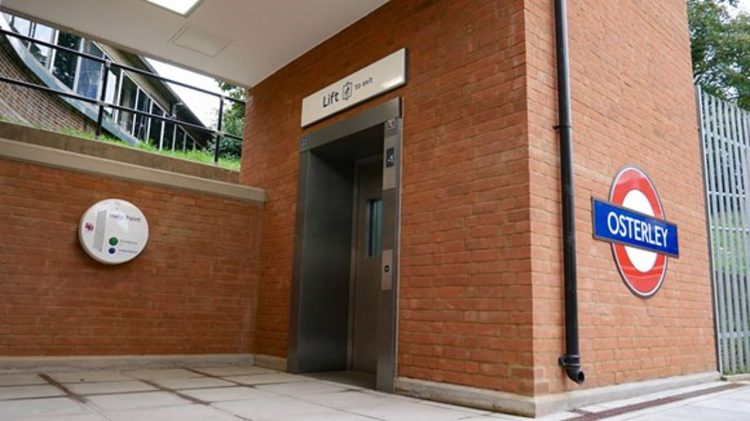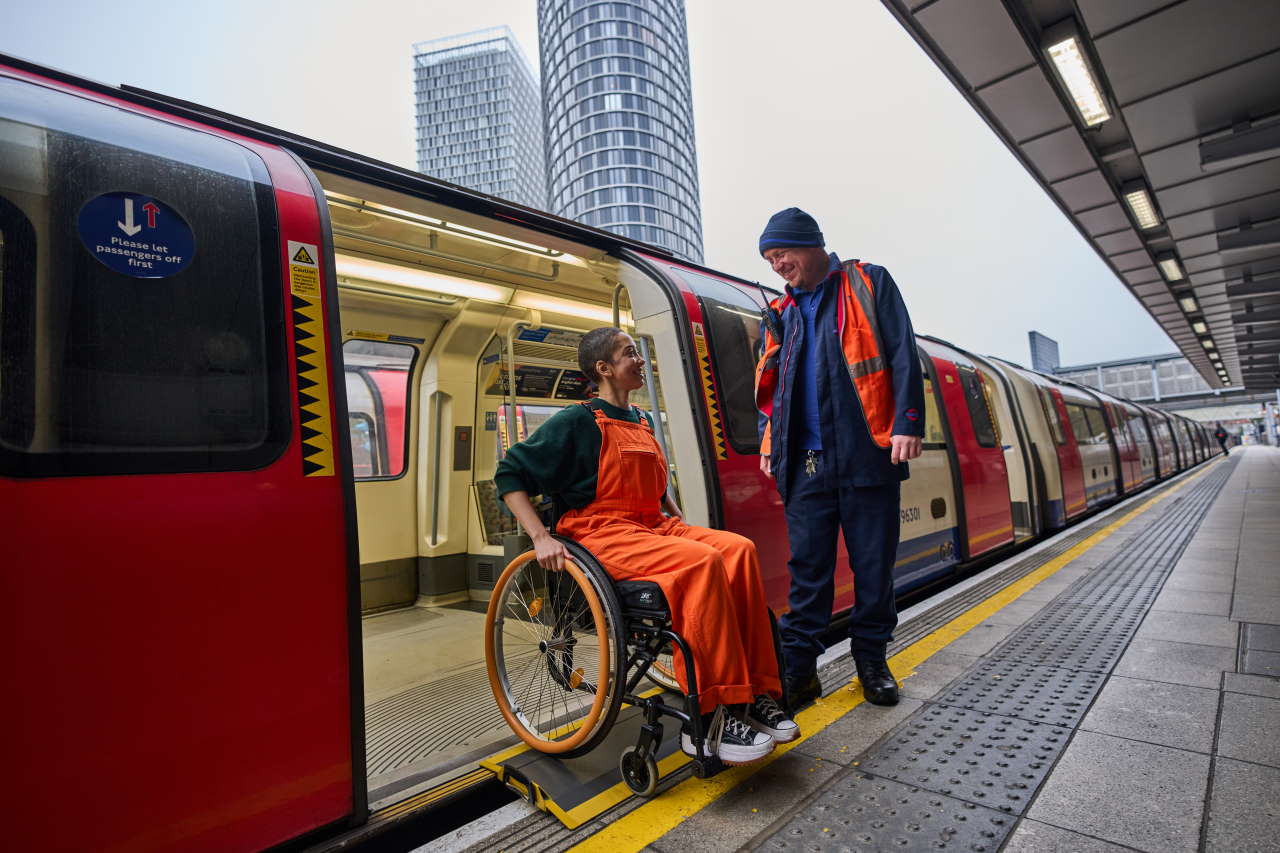The 16th of November saw Transport for London publish the results of its step-free access consultation which coincides with the trialling of a new bridging device which will support its ongoing work to create a more accessible and inclusive transport network across London.
The special bridging device has been commissioned by Transport for London and has been developed in order to offer extra support, comfort and reassurance to customers using step-free stations where a small gap remains between the platform and the train.
The new briding device will be put in use at eight Jubilee line stations until February 2023. Customers are invited to try out the new bridging device at stations taking part in the trial and can do so by requesting to use it, staff will then deploy the device. Staff members are also on hand to help customers wishing to get off the train using the device at the trial stations. The bridging device provides a similar width to boarding ramps which are already in use across the Transport for London network but are only 200mm in length.

Customers who have tried using the device are invited to leave comments about their experience using the bridging device alongside any ideas for a name for the device. Transport for London will consider rolling out the device across the London Underground and further afield if the trial is successful and will work toward making London’s network even more accessible and inclusive.
The Transport for London public consultation took place over 14 weeks starting in November 2021 and focused on how to best create step-free access for the Tube once suitable funding is located. The consultation saw 5,500 people take part and saw 66% of public respondents reveal that they would use the Tube more if further step-free stations were available. 880 people also revealed that they do not use the Tube currently with 80% of those saying they would use it if it were to become more accessible to their needs.
Mark Evers, Transport for London’s Chief Customer Officer, said: “Making our transport network more accessible and inclusive is a top priority for us, as we know that a more accessible public transport network benefits everyone. The response to the consultation shows how important accessibility is for encouraging more people to use public transport. The bridging device has been designed to improve customers’ confidence and experience of using the network and I hope as many people as possible try it out during the trial period.
“The results of the step-free access consultation have already been embedded in our short-term work to improve accessibility and will continue to shape our future goals.”
Seb Dance, Deputy Mayor for Transport said: “We are working hard to improve step-free accessibility across the TfL network in order to build a better, fairer London for everyone. This new trial is one example of how we are seeking out innovative solutions to enhance step-free access. It is also vital that our accessibility plans are informed by disabled and older customers and I am delighted that we have had such a great response to the consultation.
“I’m pleased that there are now more than 200 step-free stations across the TfL network are step-free and with the recent opening of Bond Street station, all 41 Elizabeth line stations have step-free access, with the majority of central stations on the line being step-free from street to train. There is still work to do, and we will ensure that this feedback shapes how we prioritise and deliver step-free stations into the future.”

The consultation also revealed:
- Stations that interchange with other transport services are a clear priority for respondents, as well as stations that are in easy reach of hospitals and healthcare services
- 69% of public respondents felt it best to prioritise step-free access at a mix of some smaller and medium-sized Tube stations and also as part of a complex station instead of just one complex station, a few medium stations, or smaller stations.
- 63% of respondents would prefer Transport for London to ‘plug the gaps’ when there is a large area with fewer step-free stations rather than create ‘hubs’ by filling in the gaps where most of an area is already step-free
- Over half of respondents said their usage of the Tube would increase and their journeys would be easier and less stressful if their more important Tube stations were made step-free
The consultation also revealed that other areas within the network could be addressed such as improved toilet provision, accessible signage, staff boarding ramp training and walking distance between step-free routes. Transport for London is currently working to deal with these issues as follows:
- Transport for London has assigned a budget in order to improve toilets that are most in need of repair. Further analysis is also underway to discover where there are gaps in accessible toilet provision, especially at stations with existing step-free access
- Accessible signage has been installed at 16 London Underground, 11 Elizabeth line and two Docklands Light Railway stations and will improve step-free wayfinding in stations. Further stations will also see accessible signage installed shortly.
- Members of staff at stations which have boarding ramps available have undergone briefing to ensure that they can aid customers needing ramp assistance. Transport for London will continue to train staff in essential accessibility and will also look into updating existing training materials.
- Transport for London is adding Interchange walking time on its Journey Planner and will be featured as part.
The consultation was developed alongside Transport for London’s Independent Disability Advisory Group as well as with a number of organisations which represent older people, disabled people and parents/carers.
John McGeachy, Age UK London’s Senior Campaigns Officer, said: “These consultation results provide a powerful illustration of the potential that step-free stations have to the transform lives of older and disabled Londoners as well as many others. Increasing the number of step-free stations on the Underground network will open the capital up to people that have faced too many barriers for too long. When greater accessibility means more people can go to the places they want to go to everyone benefits. Step-free stations are a priority and we look forward to seeing work start on new projects as soon as possible.”
The progress of the step-free project has been impacted by the pandemic, however, Transport for London will make good use of the consultation results in order to discover the stations which will benefit from step-free access work next.
Outside funding will be an essential part of providing step-free programmes and Transport for London will continue its work with third parties and developers in order to discover funding. A list of 20 stations was submitted to the Department for Transport‘s Access for All programme this September.
Knightsbridge and Paddington (Bakerloo line only) have seen Transport for London work alongside third parties in order to provide step-free access. The ongoing upgraded work at Bank station will also see step-free access for the Northern line alongside improved step-free access for Docklands Light Railway as well as a new accessible toilet which is being designed, funded and delivered as part of the High Speed 2 which will also see the provision for step-free improvement at Euston and Euston Square Tube and railway stations.
There are over 200 step-free stations throughout the Transport for London network including:
- 92 Tube stations
- 62 London Overground stations
- all Docklands Light Railway stations and Tram stops
- All 41 Elizabeth line stations
- Most central stations are also step-free from street to train.






Responses
good idea…